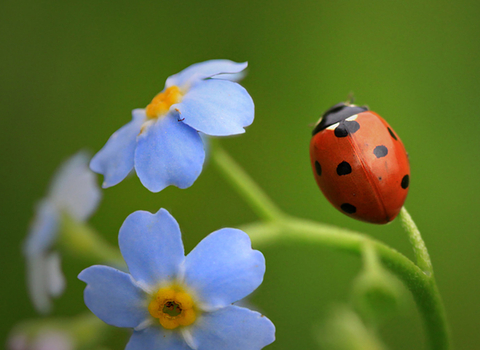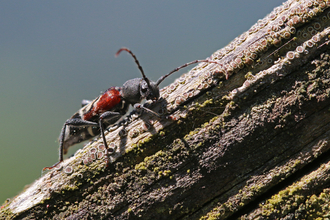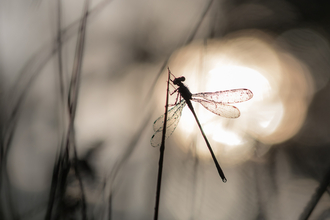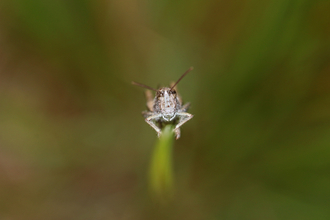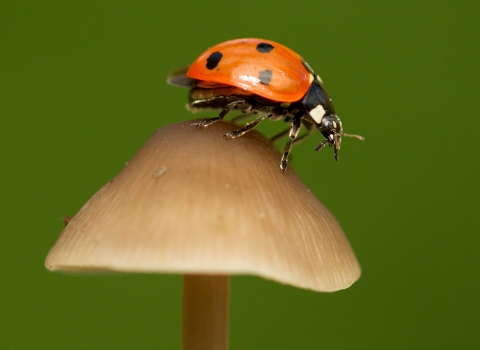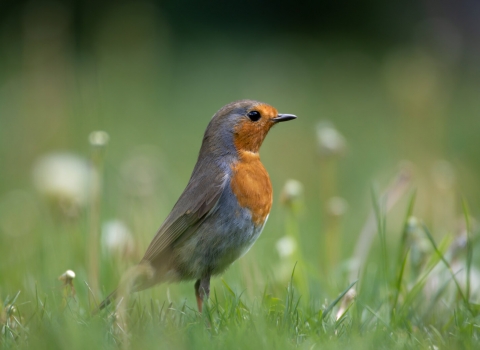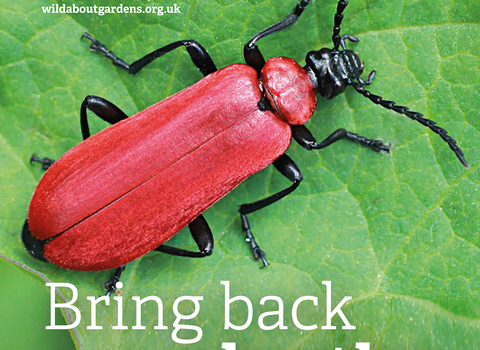Endearingly familiar to us from childhood, it seems only right that the collective term for these attractive little beetles is a loveliness of ladybirds. Named ‘Our Lady’s Bird’, after the Virgin Mary who was originally depicted wearing a red cloak, the bright colours are, of course, a warning to predators – don’t eat me, you’ll regret it! Ladybirds exude a distasteful yellow liquid, called ‘reflex blood’, through their joints and are able to play dead as an extra means of defence.
In Britain we have 47 species: 27 are conspicuous ladybirds and 20 are, you guessed it, inconspicuous. The inconspicuous ones are tiny, duller in appearance and don’t really look like their larger, more familiar, spotted cousins. Ladybird identification isn’t straightforward but here are nine species for a ‘spot the ladybird’ challenge! Our trustee and lover of ladybirds, Sandra Young, takes a look at some of our more common species.
You can help us understand more about Worcestershire's ladybirds by taking a quick photograph and uploading it via our short wildlife sightings form.
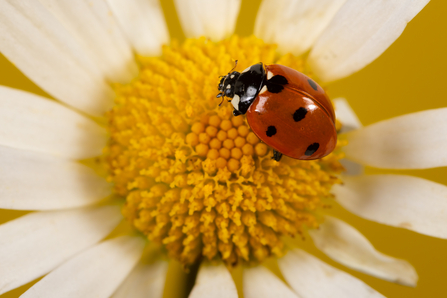
7-spot ladybird by Jon Hawkins/SurreyHillsPhotography
7-spot ladybird Coccinella septempunctata
Let’s start with an easy one, the iconic childhood ladybird and our most common native species. 7-spots, as we simply call them, are instantly recognisable with bright red wing cases (elytra), each bearing three black spots plus a seventh spanning both elytra. The pronotum – a hard plate behind the head – is black with white front corners. It occurs in many habitats and is very common in our gardens, providing a wonderful pest control service by voraciously munching aphids.
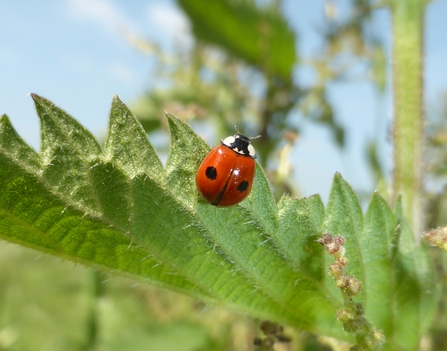
2-spot ladybird by Nicki Farmer
2-spot ladybird Adalia bipunctata
In its most common form this is an easy one – a red ladybird with a black spot on each wing case. Unfortunately, life is never that simple and it has many other forms with differing numbers of spots and patterns, including red spots on a black background. They usually shelter under tree bark but can sometimes be found overwintering in clusters on upstairs window frames or in your attic.
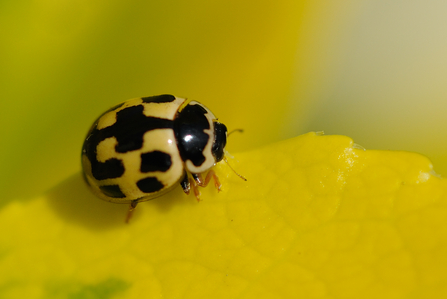
14-spot ladybird by Amy Lewis
14-spot ladybird Propylea quattuordecimpunctata
This yellow ladybird has rectangular black spots that are often fused so they resemble the shape of an anchor. It occupies a range of habitats including grasslands, saltmarsh, woods and farmland where it is a major aphid predator. Garden host plants include roses, beans and blackcurrants. It overwinters in low vegetation and emerges later than other ladybird species, earning it the nickname ‘dormouse ladybird’.
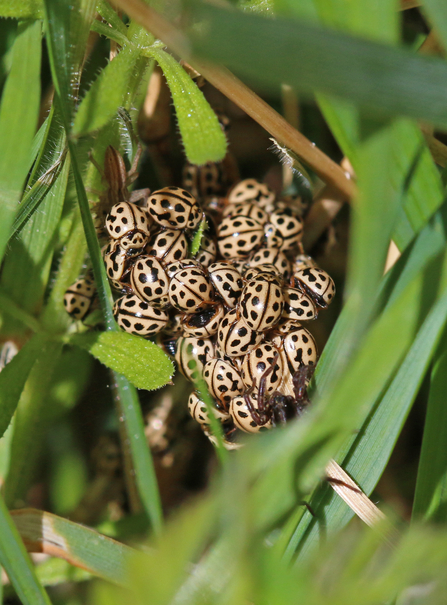
16-spot ladybirds by Wendy Carter
16-spot ladybird Tytthaspis sedecimpunctata
A small beige ladybird which, despite its name, can have between 13 and 18 black spots. Three of the outer spots are generally fused into a distinctive zigzag pattern and there is a distinctive black line between the elytra. It is abundant in grassland and low plants and may be found overwintering in very large aggregations. One of our few non-predatory ladybirds, it feeds on pollen, nectar and fungi.
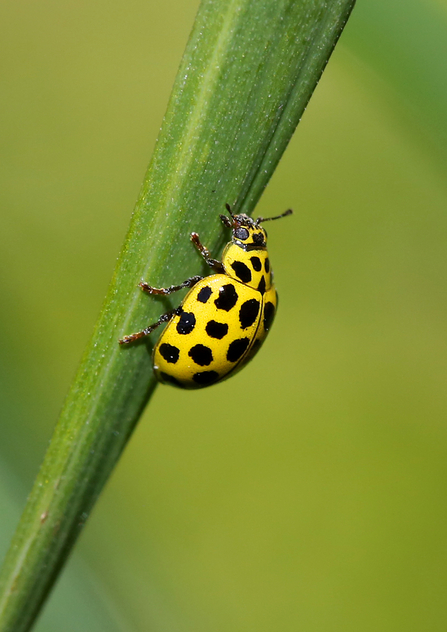
22-spot ladybird by Jon Hawkins/SurreyHillsPhotography
22-spot ladybird Psyllobora vigintiduopunctata
A widespread little ladybird, bright yellow with 20-22 small black spots that are rarely fused together, with five more on the pronotum. Its colour and individual markings should help distinguish it from the 14- and 16-spot ladybirds. It’s the only ladybird whose larvae and pupae bear the same colour and pattern as the adult. Often found on hogweed and other umbellifers, it feeds on the mildew of these plants.
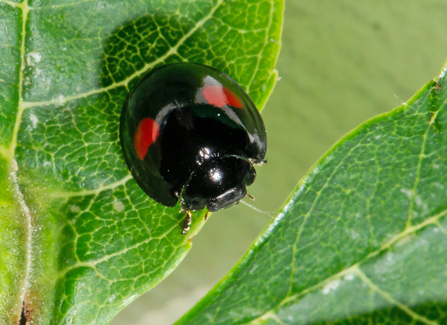
Kidney spot ladybird by Gary Farmer
Kidney-spot ladybird Chilocorus renipustulatus
An attractive black dome-shaped ladybird with a large red spot on each side of its back, a distinctive rim around the edge of the elytra and a black pronotum. Do not confuse this little one with a form of the non-native harlequin ladybird, which is bigger and has a white pronotum with black markings. The kidney-spot is commonly associated with deciduous trees, especially the ash and sallow, and it feeds on scale insects.
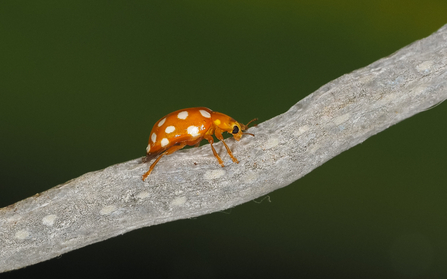
Orange ladybird by Pete Smith
Orange ladybird Halyzia sedecimguttata
A ladybird without ‘spot’ in its name! Yes, it’s bright orange but it does have white spots - between 12 and 16. This species is doing well and increasing in number so, although considered a woodland species, can now be found in more urban areas on trees such as oak, sycamore and hawthorn. Both the larvae and adults feed on the mildew on the trees’ leaves.
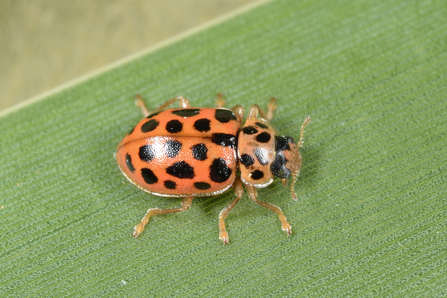
Water ladybird by John Bingham
Water ladybird Anisosticta novemdecimpunctata
Look for this specialist ladybird in floodmeadows along the Severn and Avon rivers. It feeds on aphids on waterside vegetation such as reed and reedmace. In spring its elytra are red, generally with 19 black spots, and its pronotum is beige with six black spots. In winter the elytra turn beige and it shelters in the dead leaves and stems of reeds or in grassy tussocks.
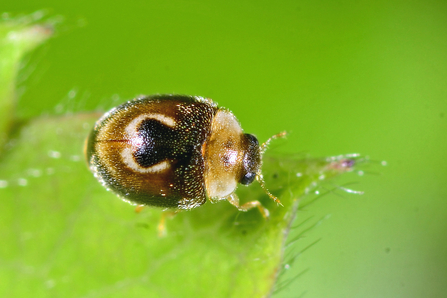
Horseshoe ladybird by John Bingham
Horseshoe ladybird Clitostethus arcuatus
Your challenge! A miniscule inconspicuous ladybird which, with the aid of a hand lens, you’ll see has a cream horseshoe mark on its dark brown elytra, which are hairy! Records are scarce but it is locally abundant around Kidderminster. It favours ivy growing on trees such as oak and eats whitefly.
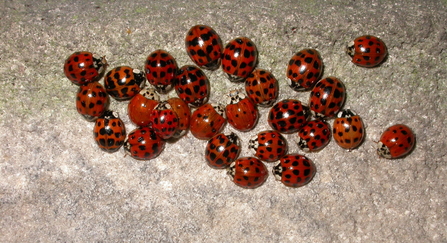
Harlequin ladybirds by Philip Precey
Harlequin ladybird Harmonia axyridis
This non-native invasive ladybird comes with a variety of spots and colours and can be found as red with many black spots or black with as few as two spots. They're often quite wide and have a 'skirt' around the edges of their wing cases. Harlequins are generalists so can be found in gardens and woodlands alike. During autumn, they often wander into houses and hibernate in large numbers in nooks and crannies, emerging en masse in spring as they ask to be let out of windows and doors. They sometimes prey on our native ladybirds and can out-compete them for food.

